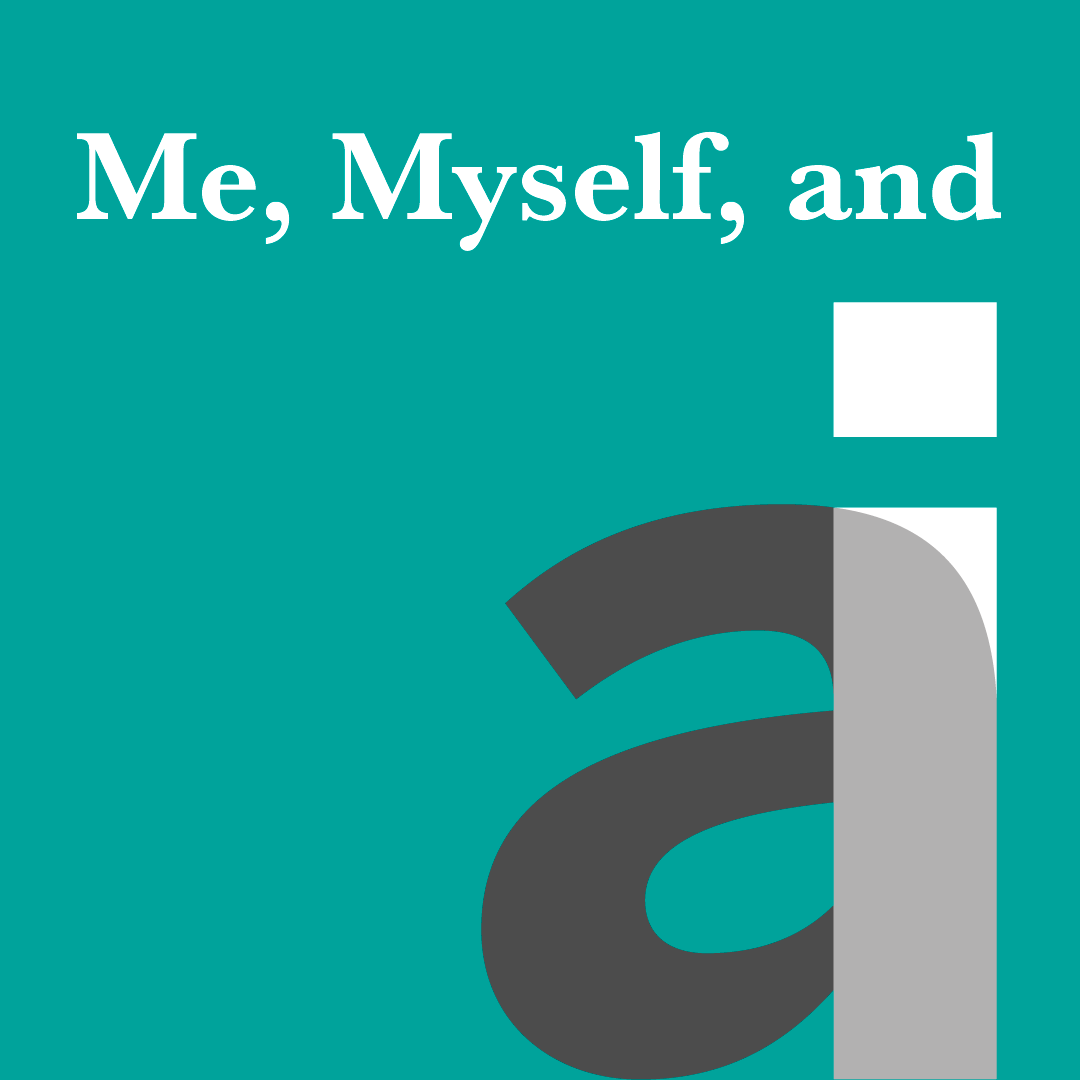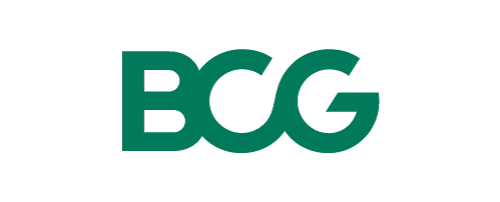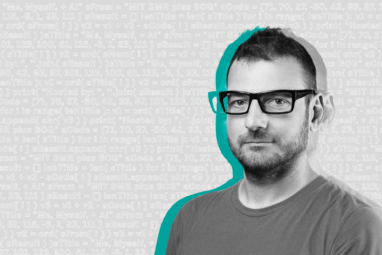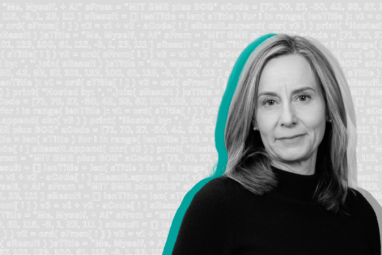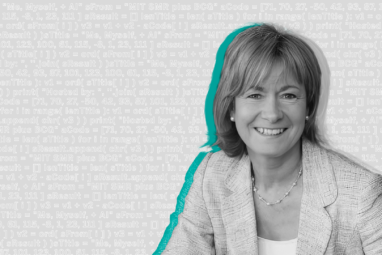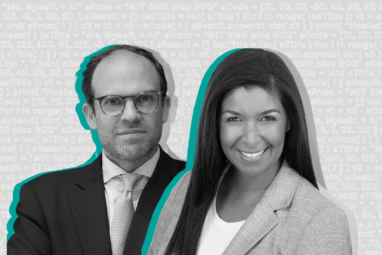Topics
Artificial Intelligence and Business Strategy
In collaboration with
BCGAfter trying his luck at the stock market, Ronald den Elzen landed in a career in technology leadership instead. Today, as the chief technology and digital officer of The Heineken Company, he encourages his team to think about the legacy beverage company as a 160-year-old startup with global scale, operating with multiple brands in more than 80 markets. When members of his team can work with agility and less fear of making mistakes, he finds they are more successful at rolling out new technology initiatives.
Heineken uses AI extensively in areas including revenue management, promotional optimization, and logistics, but Ronald believes much value still comes from traditional AI — such as predictive analytics and machine learning models. Heineken is focused on using these foundational tools to drive tangible business outcomes, from optimizing supply chains to improving customer engagement.
Subscribe to Me, Myself, and AI on Apple Podcasts or Spotify.
Transcript
Sam Ransbotham: Stay tuned after the episode, when Shervin and I discuss the key points from today’s guest.
Shervin Khodabandeh: A 160-year-old global brewing company still operates like a startup today. How does this help them put customers first in over 80 markets? Find out on today’s episode.
Ronald den Elzen: I’m Ronald den Elzen from The Heineken Company, and you’re listening to Me, Myself, and AI.
Sam Ransbotham: Welcome to Me, Myself, and AI, a podcast on artificial intelligence in business. Each episode, we introduce you to someone innovating with AI. I’m Sam Ransbotham, professor of analytics at Boston College. I’m also the AI and business strategy guest editor at MIT Sloan Management Review.
Shervin Khodabandeh: And I’m Shervin Khodabandeh, senior partner with BCG and one of the leaders of our AI business. Together, MIT SMR and BCG have been researching and publishing on AI since 2017, interviewing hundreds of practitioners and surveying thousands of companies on what it takes to build and to deploy and scale AI capabilities, and really transform the way organizations operate.
Hi, everyone. Today, Sam and I are excited to be talking with Ronald den Elzen, chief technology and digital officer at Heineken. Ronald, welcome to the show, and thank you for taking the time to talk to us.
Ronald den Elzen: Thank you for having me. It’s a pleasure.
Shervin Khodabandeh: Heineken is such a big brand, and I think most people listening to us know Heineken. And I know you’ve been there as chief technology and digital officer, previously as president and CEO of Heineken USA. How would you describe the company?
Ronald den Elzen: I’ve been here now for 30 years. I would jokingly say, “Heineken is a 160-year-old startup.” We started here in Amsterdam, so [it was] born in Amsterdam and raised by the world. Our brands are sold in over 190 countries … and we have large production facilities, breweries, or big sales organizations in 80 markets in the world, so we’re basically omnipresent. Yes, we are The Heineken Company, but in many markets we have local brands, like Birra Moretti in Italy, Cruzcampo in Spain, Tiger in Southeast Asia, Tecate in Mexico. So we are a large global company with a global footprint from North America to Europe, but [we are] also available in South Africa, Nigeria, Haiti, Brazil, Indonesia, and many other markets in the world.
Shervin Khodabandeh: Why did you say a startup?
Ronald den Elzen: We are still a family-controlled company, and I think in the DNA of Heineken and all our management across the world … you can feel that. You can feel this entrepreneurship. You can feel the can-do mentality.
We have quite the senior leadership in our operating markets across the globe. And that entrepreneurship, that can-do mentality, that agility to react very quickly to local circumstances is part of our DNA. I find that entrepreneurship [way of operating at our] companies … has downsides as well because it feels like we have 80 startups, and balancing that with global scale — that is one of the challenges we have.
Shervin Khodabandeh: You’ve been a big proponent of AI and analytics in general, I know. Tell us what you’re excited about.
Ronald den Elzen: Why I like AI: Believe it or not, once I graduated in [1995], I tried to predict the stock market with neural networks, and I was not very successful. There’s always been something in me that loves data, that loves [forecasting], that loves analytics, that loves the structure of data. Also, my current job, which is much broader than just AI, I really find is exciting at times.
Shervin Khodabandeh: Something we see across industries, and particularly in consumer packaged goods, is that there’s just so much value on the — I don’t want to say old-fashioned because a lot of these techniques aren’t really old-fashioned — basically good optimization and prediction and stuff that I would say predictive AI is really, really good at. Sometimes companies forget about that and focus so much on GenAI.
Ronald den Elzen: I agree. By the way, I can even make it worse. I think there’s a lot of money in BI [business intelligence] just understanding descriptive [analytics], how it works and what happened in the past. We underestimate something, what’s under our nose. We all like the new shiny object, but BI, classical AI, and now GenAI, I think will take off very fast. We can talk about that in a second, but I agree with you. For us, it’s really important to still keep a good focus on these classical AI models.
Sam Ransbotham: What are some examples of ways that you’re using artificial intelligence?
Ronald den Elzen: There’s, I think, a broad array in Heineken where we use big-value AI and sometimes more proof of concepts. We now live in an era where what we talk about is GenAI, but truth be told, 95% of where Heineken gets its value from, and also a large part of where we invest, is classical analytical AI, machine learning models, predictive analytics, etc.
But if I split the two, then we are doing quite a bit on these more predictive models around, of course, revenue management, optimization of promotions, consumer promotions in grocery stores, business-to-business trade promotions. We do quite a bit. As you can imagine [with] a company like Heineken, there’s a lot of advertising and promotion, so advertising, marketing mix, commercial mix, optimization, sales execution. So what [are our] next best actions, product recommendations? [We do] a lot on the commerce side because that is where we need to win and want to win and need to be competitive.
There’s, of course, a large cost base in manufacturing and logistics. And, by the way, machine learning is a fairly good tool to optimize logistics movements of trucks and even truck loading … but also manufacturing, where more and more, we use data with [the internet of things]. We take data out of our machines in every brewery we have across the globe, and try to analyze this, and predict [the] behavior of machines and, of course, optimize the output. I would say, across the entire value chain from consumers to customer engagements to machine optimization to truck utilization, that’s where really the value is that we can measure, we can track, and we can drive.
Shervin Khodabandeh: When you said a 160-year-old startup, a part of me thinks a startup is not so bad for AI, because there’s so much experimentation and so much learning of new things, and you want to be agile and learn. On the other hand, you also are running [at] scale. So tell us how you think about the startup culture and AI, and how that’s been.
Ronald den Elzen: I would say a 1-year-old startup would be great because you’re a digital native and you’re starting from scratch. A 160-year-old startup has a lot of legacy, and like many other large companies like Heineken, we’re still quite fragmented in our tech landscape, in our process landscape, in our data definitions. That was, for a long time, not an issue, right? Being very local, close to your communities, is a strength of the company. How do we keep this local strength, local understanding, but balance that with global scale? Big data becomes quite valuable when you can access not only the data but also make it comparable.
This startup mentality has for a long time helped [us] to be agile, fast, [and] adaptive in the marketplace, but in the last couple of years, it became more of a hindrance because the lack of standard data definitions and standard data access was inhibiting faster scaling. So we really had to go back and say, “Across the globe we need to make an intervention, we really need to work on data quality.” And I have to say, I had never before seen our general managers, our managing directors in markets, start understanding that they needed to invest in the quality of data. [They started] to understand that unique data, first-party data, is relevant to compete in the marketplace.
We have very senior people talking about not only the importance of but the value of data — that’s a huge win.
Shervin Khodabandeh: That’s game-changing.
Ronald den Elzen: Absolutely.
Sam Ransbotham: You’re bringing up some very interesting trade-offs that seemed, honestly, quite difficult to me. It’d be great to have everything all cleaned up and beautiful and pretty, but while you’re doing that, you’re not making progress on some other model. When you’re spending money on traditional AI, you’re not necessarily working on generative AI.
Last fall, Shervin and I were looking at this same issue in a report we published. One of the things we asked people was, “Is the organization’s focus on generative AI taking attention from traditional AI initiatives?” In our research, we found that only 26% of the people thought that GenAI was distracting. And I think that’s important here. People are not forgetting the idea of traditional AI.
But I wonder about that. How do you make these decisions? How do you decide, hey, should we spend $1 cleaning up data or $1 building a new model? [Should we spend] $1 on traditional or $1 on generative? How do you make that decision?
Ronald den Elzen: That is not easy. And I think that’s the one where we make, of course, [the] most mistakes. I don’t think we live in a time where you can choose to do either-or — you need to balance that. It’s a bit about the benefits you can get in the short term while investing in the long term. It’s about cleaning up the historical legacy systems and, at the same time, building for the future. In Heineken, we even have a digital strategy that’s balanced across those two big streams. I would love to say, “Look, let’s wait with all the new stuff, and for the next five years, really sort out the back end, harmonize, standardize, clean it up, centralize, go to the cloud, everything, do it, make it perfect,” but we [would go] out of business.
At the same time, if I only invest on the front end of the market with a highly innovative AI model, and [it’s] classical AI or GenAI, if I only do that, then we get stuck in spaghetti, a labyrinth … mapping of historical data sets.
You need to do both, and you need to try to do that intentionally, very deliberately. So one of the things we did in Heineken is create what we call a program board, which is a subcommittee of our executive team. We try to decide, because everything nowadays is interdependent, where to focus, what to do first, and what to do next to understand how all these things mingle together. And if you do this smartly and intentionally, actually, all the little bits can lead to a future goal.
Shervin Khodabandeh: You also said making mistakes, and I couldn’t help but think of that as actually a positive thing, whereas maybe 15, 20 years ago in technology that wouldn’t have been such a positive thing. What do you think about the necessity of making mistakes, and the culture and the mindset that some mistakes have to be made, and that the learning from those are far more valuable than the potential damages of a mistake?
Ronald den Elzen: I think I wouldn’t be where I am today if I didn’t make a lot of mistakes in my life. Culturally, we find it difficult to acknowledge mistakes, and, actually, we launched something we called an F It Award. Sorry to say it like that, I hope that’s allowed on the podcast because we want to stimulate the culture of “We need to try.” You can only win if you’re willing sometimes to lose.
I think the good news is the cost of failure is coming down tremendously. You can do much smaller experiments and many more at the same time. I see it as my role to minimize the cost of failure. I see it as my role to, as quickly as possible, understand [when] we need to stop and then say, “Let’s [make] a new decision and do it again.” I also see it as my role to stimulate a level of risk appetite and not just risk aversion. If people are really afraid of making mistakes because they think [it will hurt their] career, that would be wrong. So we need to protect the people who are willing to make mistakes. I truly believe it’s easier now than it was 10 years ago because the cost of failure does not have to be as high as it was 10 years ago. That has really changed.
Shervin Khodabandeh: That’s actually quite an interesting way to look at it — not to avoid or minimize mistakes but actually minimize the cost of failure, which is a different mindset. When it comes to digital and AI, what is your portfolio of buy versus build versus partner? What do you think about the landscape? I know it’s a very general question, but I’ve seen companies index entirely one way or the other with very hard-and-fast rules. I’ve seen companies be a bit more, I would say, nuanced with some guiding principles as to how they might make those decisions. What do you think about that?
Ronald den Elzen: This has also changed. I think we have come to the conclusion in the last probably four or five years or so that certain competencies certainly became critical or [are] of competitive importance for Heineken. Always, of course, we want to [have] the best marketing, we want to have the best consumer insights, we want to brew perfect Heineken. And now also machine learning engineers, data scientists, software engineers, and cybersecurity specialists become very important in the company. So, one, I would say, is that more and more we start to value these critical roles in the company.
Two is we try to adhere to a bit of a process when we do AI models. One is, we try to ask the business, and I should say, digital and technology is an essential part of the business, but we try to ask the commerce people or supply chain people or finance people, where do you think the big value could be? We very often use external parties to help us to identify that.
If a partner can help to say, “This is how you could look at revenue management. Have you considered this?” We start to design that. Then we build it. We say, “We want to build it out. We want to own the code.” If we have coded it ourselves, it’s much easier over time to maintain. And we, per definition, don’t build one product in one go. You start adding releases, new features, new functionality over time. So design externally, build ourselves. And then when we deploy, we get into the adoption because it’s not about, here is an AI model or an application or piece of software. No, the real change and the real effort, and the thing we always underestimate, is changing the behavior of the users, and that can be customers and often also our own employees. That is where we still use a lot of external help.
After that, [there’s] the whole cycle, where we run the project, the continuous process, and we get to DevOps. We can do that better. I think it’s essential that you do that together. So there’s a part of the process [where] we look outside and then a part we want to do internally.
Sam Ransbotham: We like to close down our episodes with a series of small, rapid-fire questions. Just answer with the first thing that comes to mind. What do you think is the biggest opportunity for AI right now?
Ronald den Elzen: Automation and very quick decision-making, that’s the biggest opportunity for AI.
Sam Ransbotham: What’s the biggest misconception about AI right now?
Ronald den Elzen: That AI is only for the very few, and you can wait and sit it out. I think it is highly urgent. Everybody should be curious [and] learn as much as they can because it’ll impact everyone’s life.
Sam Ransbotham: What was the first career that you wanted?
Ronald den Elzen: Ha! I wanted to work for an investment bank.
Sam Ransbotham: I guess if your stock market prowess had been better, you might have taken a completely different path, then.
Ronald den Elzen: We started this podcast by talking about failures. This was one of my first ones — I did not succeed.
Shervin Khodabandeh: But you did minimize the cost of failure for sure.
Sam Ransbotham: You minimized the cost of failure, so that ties back in. When are people using too much AI?
Ronald den Elzen: I work in beer. I like it when people think the glass is half full. So thank you for that.
Sam Ransbotham: When is there too much artificial intelligence? When are people using these tools too much?
Ronald den Elzen: When the human interaction is gone. We have a purpose in the company, which is the joy of true togetherness. I really hope I will never talk to AI and drink a beer with AI. If real, true connections are out of our life, then it has gone really too far.
Shervin Khodabandeh: Well said.
Sam Ransbotham: What’s one thing you wish that AI could do that it currently can’t do? What’s limiting us?
Ronald den Elzen: The limit is our own understanding and capability to deal with it. I really think the biggest thing today is the speed of society, the understanding [of] what we can do. And we need to do that carefully. We need to bring people along. If change is too quick, that will lead to polarization. I think actually that is one of the things we see in society today, that some things are going so fast it’s very difficult to oversee the consequences. So we need to take people on the journey, and this is sometimes difficult to understand. AI can be a black box.
Sam Ransbotham: I think that’s really interesting because that ties into your third step of deploying adoption, and how difficult that is, and why you’re working with external people for exactly those things.
Ronald den Elzen: We have now learned that when we deploy an AI model, we make three pieces of the model. One is what we call a decomposer. Basically, that is looking back at what has really happened. And if you give that to somebody with 30 years of Heineken experience, yeah, that kind of makes sense, I can see that. Then the second piece we make, we call it a simulator. So what if I would put more money on Heineken or more money on Dos Equis, or less money on Walmart, and more money on Kroger? And then people [say], “Yeah, I can understand it will work like that.” And then the last part is you optimize with the black box. And the first tool, hopefully they will not use [it] a lot, but [that] will help adoption because it helps them to say, “I trust the model,” without really knowing what’s happening under the hood. So adoption is key.
Sam Ransbotham: Well, it’s been a very refreshing conversation. Lots of people want to talk about how amazing everything is going. It’s been refreshing. You’re willing to talk about some of the things that you’ve learned from doing things poorly. Thank you for joining us today.
Ronald den Elzen: Thank you again for having me, and [I] hope we can make a lot of failures to learn very fast, and then really make an impact on society and help our customers to grow.
Shervin Khodabandeh: We just finished our conversation with Ronald. And I found it really illuminating, and inspiring. He actually gave pretty, I would say, valuable ideas on a playbook that I would expect many CIOs, or chief technology and digital officers, and CEOs are struggling with. [There] is a constant balancing act [between] the willingness and, in fact, the desire to make mistakes but manage them by minimizing the cost of mistakes, or the cost of failures, versus avoidance. I think that ties very nicely into what we’ve also been saying about the importance of learning and organizational learning and experimentation.
Sam Ransbotham: I thought it was interesting, the idea of his program board with all of the people talking about all of the different projects. You know, it’s easy to say that on a podcast, but it just seems really hard to get all that information in one place, to be able to look at it all at the same time. I bet that’s a challenge.
Shervin Khodabandeh: Well, one of the other things here is it’s a complex company. I mean, it’s so many different brands, in so many different geographies. There is such local importance — local knowledge, local expertise, local context, yet it’s a global company. So it needs to run [at] scale, yet it needs to adapt locally. This idea [recognizes] that life is not simple. And things are complex and it is OK for them to be complex. We should understand the complexity. I also liked when we were talking about AI and GenAI, he also went to BI.
Sam Ransbotham: Exactly.
Shervin Khodabandeh: Good old-fashioned business intelligence. Unless you appreciate the nuances of what is going on, how are you going to design or develop anything that’s going to create value?
Sam Ransbotham: He broke that down well with the decomposition as a first step. I bet that’s pretty highly BI-oriented.
Shervin Khodabandeh: The other thing I found very refreshing was this complete openness to call a mistake for what it was.
Sam Ransbotham: Our listeners may not appreciate this, but most people obviously come on … to tell good stories about things that have gone well. We do like to pay attention to those stories of things going well, that’s enjoyable to hear about. It’s nice to not have the impression that every project goes well for every company, perfectly all the time.
I thought it was really interesting how he broke down the steps of projects to design, build, deploy, and keep their value. But then he would line those up with where they’re getting internal and external knowledge from. He clearly had put some thought into that and organized the way that they’re trying to combine information from the best sources, and they’ve thought that through. I thought that was interesting.
Shervin Khodabandeh: That’s very important.
Sam Ransbotham: He clearly is a glass-half-full kind of person. And I think that’s a good theme for our episode.
Shervin Khodbandeh: Thanks for listening, everyone. If this episode inspired you to buy a Heineken product and maybe think about AI while you’re enjoying it, well, that’s not a bad idea. We’re back in early February to talk with Jeff Miller, executive vice president of communications for the National Football League, just in time for the Super Bowl. Please join us.
Allison Ryder: Thanks for listening to Me, Myself, and AI. Our show is able to continue, in large part, due to listener support. Your streams and downloads make a big difference. If you have a moment, please consider leaving us an Apple Podcasts review or a rating on Spotify. And share our show with others you think might find it interesting and helpful.


